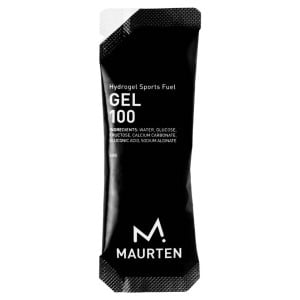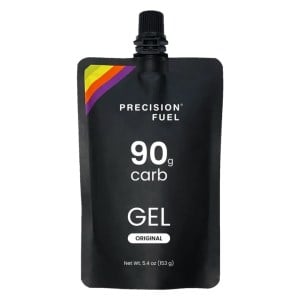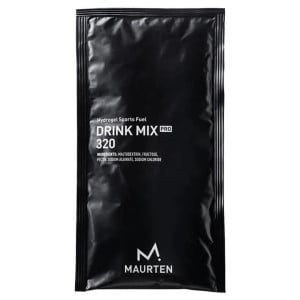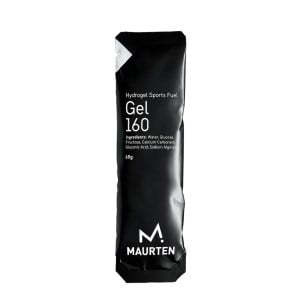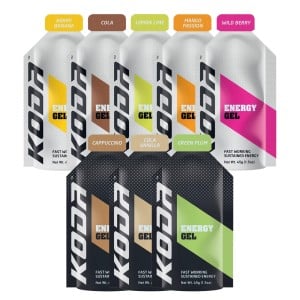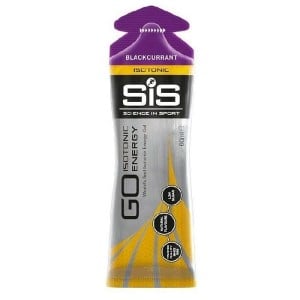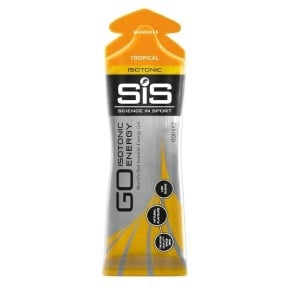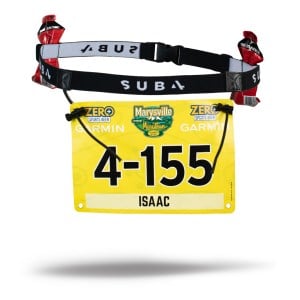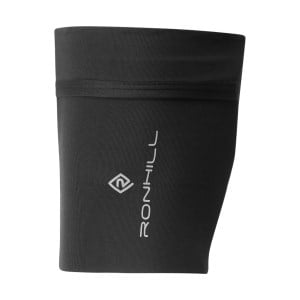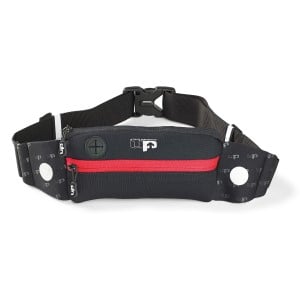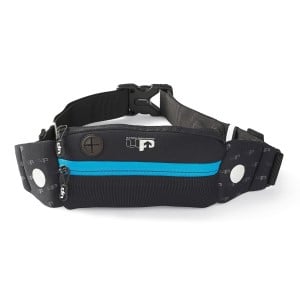Energy Gels For Running: The What, Why & How From 10K To Marathon
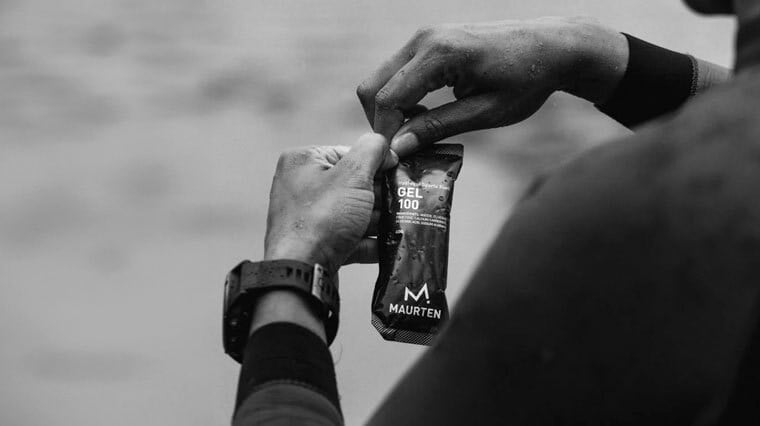
Energy gels are game-changing for your race day fuelling strategy. For decades, energy gels have been helping runners extend the limits of their endurance by providing fast-acting energy in an easily portable pouch. Today, through innovations in sports nutrition, the running market is vibrant with a plethora of energy gels from leading brands including Maurten, Precision Fuel & Hydration, Huma, SIS and Koda.
Energy gels are for every endurance runner, not just elite athletes. For runners, being able to fuel effectively on-the-go allows you to ward off fatigue before it strikes, enhancing your performance, avoiding hitting the wall and getting you closer to your half marathon or marathon PB goals.
Even before you fly off the starting line, the boost an energy gel can provide for your 10K or longer runs can cultivate not only improved focus, but improved confidence to flow into a feel-good rhythm. Remembering that running is both a physical and mental challenge, energy gels may be the fuelling companion you need to start strong and finish powerfully.
Inadequate preparation and insufficient fuelling are common reasons for runners to not finish a marathon. To run your best race, it's important to plan and test your fuelling strategy in the weeks prior to your endurance event.
In this blog, you'll learn the answers to the what, why, when and how of energy gels as we take a dive into the frequently asked questions by runners like you. This will allow you to take an informed and personalised approach to how to fuel properly during a run.
Want to know Which Energy Gel Is Best For Running? Click the link to discover the top 5 energy gels, whether fast-acting performance is your highest priority, or natural, plant-based energy gels are your go-to for steady, sustainable energy.
-
Maurten Gel 100 Energy Hydrogel - 40g Sachet$4.99
-
Precision Hydration PF 90 Energy Gel - 153g$9.99
What Are Energy Gels? Why Are Energy Gels Good For Runners?

To get a fuller understanding of why energy gels are essential for endurance runners, it’s valuable to have a basic knowledge of how your body uses sports nutrition as fuel for physical activity.
To support muscle movement, your body relies on two key energy sources, the macronutrients carbohydrates and fat (and to a lesser extent, protein).
When you consume carbohydrates (e.g. bread, pasta, rice, grains and starchy vegetables), your body converts this nutrition into glucose, a type of simple sugar and energy source.
During the initial stages of your run, your body derives its energy from the glucose located in your blood. As your run progresses and this supply of glucose is depleted, it sources energy from your glycogen, the excess glucose stored primarily in your liver and also your muscles. However, your glycogen also has its limits.
Whether you’re training or racing, during the kilometres ahead, your glycogen also will become exhausted, a condition that runners refer to as ‘bonking’. Your fat acts as a kind of energy safety net, however, it is significantly more complicated and less efficient for your body to break down fat into usable fuel compared to glucose and glycogen, the carbohydrate-based energy alternatives.
This is where energy gels step in. Energy gels provide a convenient source of carbohydrates to provide fast-acting energy to support endurance activity, such as long distance running. They are typically available as race belt-ready sachets, with their specific formulas varying from brand to brand.
It's common for energy gels to contain maltodextrin (a type of complex carbohydrate) or the simple sugars fructose, glucose or sucrose (composed of fructose and glucose) that are easy to absorb. These ingredients are extracted from plants before undergoing processing into a form that's ready to be a part of your running nutrition. For example, maltodextrin is commonly derived from corn, rice or potato starch.
If you prefer to go the all-natural path with minimal processing, no worries! Huma's chia seed based energy gels offer a stomach-friendly option flavoured with real fruit puree, fruit juice or cocoa/coffee powder. They meet your criteria for a powerhouse of energy using everyday ingredients.
How Do Energy Gels Work?
One of the key characteristics of energy gels is that they are a concentrated form of energy, as opposed to sports drinks where you’d need to ingest larger volumes to achieve a similar effect in terms of your energy levels.
The challenge for running nutrition brands is optimising carbohydrate uptake, without GI distress to the runner. Being often liquid-like, energy gels take a lot of the work of digestion off your body compared to solid wholefoods, requiring less effort and energy to break down. Energy gels provide your body access to glucose quickly for energy as they enter your bloodstream, raising your blood sugar level.
Lightening the burden on your digestive system is important, as during physical activity, your body reallocates oxygen-rich blood from functions that aren’t immediately essential like your digestion, to support your muscle movement. Just think, in early human history, the ability to flee from a predator – a matter of immediate survival - would outweigh the need to digest your most recent meal.
For the modern runner, the consequences of this survival mechanism are less rewarding, making many of us susceptible to GI distress like the dreaded runner’s trots (diarrhoea), bloating, cramping or nausea as your digestive system, including your stomach, is temporary slowed or impaired during physical activity. The repetitive jostling during your runs and pre-race anxiety, may also contribute to this digestive discomfort.
How you fuel matters. By being packed with easily digestible carbohydrates, the top energy gels are an effective solution – both in delivering fast-acting energy and in reducing digestive upset.
How Long Does It Take For An Energy Gel To Work?
You’ll generally feel the boost of energy 5 to 15 minutes after consuming an energy gel. This time frame varies not only between different sports nutrition brands, but different runners as everybody is unique, so it’s important to know how to use energy gels to cater to your personal nutritional needs.
How Much Energy Gel Should You Use?
It’s typically recommended that runners consume about 30g – 60g of carbohydrates per hour for events equivalent to or exceeding 90 minutes. That's roughly 2 - 3 energy gels per hour. The exact number will be largely dependent on the amount of carbs per gel, typically ranging from 22 - 30g of carbs.
As a general energy gel race guide for runners:
- 10K: For a 10K race, you may choose to perform without energy gels or take one pre-race as an initial energy boost.
- Half marathon: Assuming an estimated finish time of 2 hours or longer, you should have at least 2 - 6 energy gels close at hand either in your hydration pack or race belt.
- Marathon: For a marathon exceeding 4 hours, this number bumps up to at least 8 - 12 energy gels.
It can be helpful to bring an additional gel compared to what your testing in training suggests, in case of a 'fuelling emergency' (e.g. if fatigue hits you earlier than expected, or conditions on the day such as scorching weather lead to a longer than expected finishing time).
For professional athletes that can tolerate higher levels of carbs per hour and have elite-level training loads, a carb intake surpassing 90g per hour can be beneficial to performance. However, don't attempt to exceed 3 gels per hour without performing effective 'gut training'.
This involves gradually increasing your consumption of carbohydrates during training over many weeks, starting with smaller quantities, to adapt your gut to absorb a higher amount of carbs per hour comfortably. The result is increased gut tolerance and increased blood glucose availability during racing for optimised performance.
To achieve this safely and to determine the best 'gut training' timeline for you, seek the personalised advice of your dietitian. When in doubt, always follow the manufacturer's directions on your energy gels.
Fun Running Fact:
Kenyan elite marathoner Eliud Kipchage was estimated to consume 60g - 100g of carbs per hour during the INEOS 1:59 Challenge by drinking Maurten Drink Mix 320 Energy Hydrogel - providing the fuel to run an epic marathon distance in under 2 hours.
Check out the top performance-enhancing energy gels from this leading sports nutrition brand, Maurten Gel 100 Energy Hydrogel and Maurten Gel 160 Energy Hydrogel.
-
Maurten Gel 100 Energy Hydrogel - 40g Sachet$4.99
-
Maurten Drink Mix 320 Energy Hydrogel - 80g Sachet$5.99
-
Maurten Gel 160 Energy Hydrogel - 65g Sachet$7.79
When Should You Take An Energy Gel?

The secret to energy gels is planning ahead – fuelling your body before you become fatigued.
How often you take an energy gel will largely depend on the specific formula, how your body responds to it (e.g. your metabolism), and the quantity of carbs it contains. Timing is key when it comes to energy gels, so it’s essential that you follow the manufacturer's instructions and to test the energy gels during your training under race-like conditions in the weeks prior to your event.
Taking two energy gels at one time, doesn’t mean you’ll be able to endure for twice as long without needing an energy boost. Your gut can only absorb a limited amount of glucose from carbs at a time (about 60g per hour under typical circumstances), so the consequence of this will likely be an energy crash.
Even though research-based sports nutrition brands have increased the limits of carb absorption by your body to 90g carbs per hour or more, with energy gels that offer strategic ratios of simple sugars (e.g. 2:1 glucose to fructose), it's still necessary to space out your energy gels wisely and dependent on your individual tolerance.
The primary goal is to give your body access to steady, sustainable energy.
Before Your Race
When should I take my first energy gel? To kick your body into gear, it can be valuable to take your first energy gel during your pre-training or pre-race warm up within the 15 minutes prior to the starting line. At this stage you’re priming your muscles for physical activity with gentle stretches, without overworking them. This advice can apply whether you’re running a 10K (if fuelling with a pre-race energy gel for this distance is beneficial for you), half marathon or marathon.
During Your Race
Some runners prefer to skip the pre-race energy gel and take their first energy gel in the first 30 – 45 minutes of their event. This decision may in part be influenced by the timing and quality of your pre-race meal.
Whether you take an energy gel every 20 - 30 minutes, 30 - 45 minutes or 45 - 60 minutes of your race should be planned ahead of time during your training. Many runners have success with the strategy 'small and often' meaning they take a small amount of carbs in through energy gels, more frequently. Setting up a timer on your running watch can help guide you so you don’t miss out on an opportunity to refuel on the run.
Opinions regarding the exact timing vary between runners, remembering that every runner, every energy gel and every race day is different. Go into race day with a specific nutrition strategy in mind, but listen to your body on the day and prepare to adapt as needed.
If you're a runner that experiences stomach upset in the last half of the race, you can adapt by consuming a quarter of your energy gel at 15 - 20 minute intervals to provide the energy you require to reach the finish line. This will be more easily digested than a full sachet to limit discomfort while your stomach is in 'shut down' mode.
On the other hand, some runners comfortably tolerate 3 energy gels per hour throughout the entirety of the race. Therefore, your nutrition strategy should be tailored to your individual requirements and tolerances.
How To Use Caffeinated Energy Gels
Caffeine supports the absorption of carbohydrates – and as a stimulant, has numerous mental and physical benefits to your running performance including increased mental focus, energy and reducing your perception of effort. However, it’s important to gradually test your tolerance to caffeine, as in excess, it can be detrimental to your health and performance – with symptoms including accelerated heart rate, spike in blood pressure, anxiety, poor sleep, digestive upset and jitters.
Start with caffeinated energy gels with a lower caffeine content and be sure to use them responsibly and in combination with energy gels without caffeine to avoid overconsumption and a caffeine-induced energy crash. If you’re new to caffeinated energy gels, the Lemonade and Raspberry flavours of Huma Chia Energy Gels contain 25mg of caffeine per sachet which is a good place to start and test your tolerance.
The goal is to determine an effective dose of caffeine for you at the lowest range to enjoy the positive benefits while reducing the risk of adverse symptoms. Your daily caffeine consumption from coffee, tea, soft drinks and dark chocolate may also influence your overall tolerance to caffeine.
You may choose to consume a caffeinated energy gel 15 minutes pre-race to boost your mental concentration off the starting blocks, or you may prefer to hold off on caffeinated options until you approach the final stretch to support a last sprint. Some runners take caffeinated energy gels prior to specific challenges in the race, like 15 minutes before a heart-pumping hill.
Find out more expert advice on this topic in Ultramarathon Nutrition & Hydration Guide: Carbs, Electrolytes & Caffeine. We recommend having a discussion with your sports nutritionist on the best way for you to include caffeinated energy gels in your racing strategy and whether they're a worthwhile option for you.
Do You Have To Drink Water With Energy Gels?
That depends on the specific formula of energy gel. Unless specified otherwise, it's best to assume that your consumption of energy gel should folllow with a drink of water - keeping in mind that they are a highly concentrated form of carbohydrates, like a sports drink without the liquid.
The SIS Go Isotonic Energy Gel is among the exceptions, with a specialised isotonic formula that allows the athlete extra convenience in being able to consume the gel without water immediately following.
Even so, if you're fuelling with energy gels (as opposed to sports drinks like Tailwind that offers all-in-1 electrolytes, hydration and calories), drinking plain water regularly throughout your race is a non-negotiable part of your hydration strategy. Isotonic energy gels simply give you more flexibility in the timing - allowing you to get that energy boost when you need it, rather than waiting for an aid station with water.
Remember that water is essential for everything from mental focus to the delivery of oxygen-rich blood to your active muscles. Drinking water will not only boost your hydration and therefore performance, but speed up the digestion of your energy gels to give your muscles faster access to that quality energy.
Although many energy gels contain a small amount of water, they alone won't be enough to support your hydration.
A key rule to remember is to pair your energy gels with water, not sports drinks. This will help prevent unnecessarily high sugar intake and related digestive distress, as together energy gels and sports drinks may result in an overabundance of carbohydrates that your body struggles to digest.
-
SIS Go Isotonic Energy Gel - 60ml Sachet - Blackcurrant$4.49
-
SIS Go Isotonic Energy Gel - 60ml Sachet - Orange$4.49
-
SIS Go Isotonic Energy Gel - 60ml Sachet - Tropical$4.49
How Do Runners Carry Energy Gels?

Packing a powerhouse of energising carbs in a small pouch, energy gels are convenient and practical for runners, whether you need an energy gel for a 10K, energy gel for half marathon, energy gel for marathon or ultramarathon.
Here are our top tips and hacks for "Where do runners carry their gels?" from the running community to keep your energy gels close.
1. Running Hydration Vest vs Racing Belt
Your decision on how to store energy gels on your runs may be linked not only to the length of your race, but your hydration strategy. Do you prefer to wear a hydration vest for consistent access to water during longer events (giving you more options of when to consume your gels if they aren't isotonic), or to keep your run lighter by relying on aid stations and timing your energy gels accordingly?
If you opt for the latter, a race belt is typically all you need for grab-and-go carrying of your energy gels, featuring easy access loops or pockets to keep them secure. Under racing conditions, you can save a lot of weight by taking advantage of aid stations regularly for your water intake, while carrying your easily portable energy gels in a race belt.
If you're seeking a happy middle ground, the Salomon Active Running Belt with 3D Bottle is a fantastic option with a bounce-free design, lightweight water bottle to wash down your gels and large gel pocket. Alternatively, a hydration pack may provide more options to store trail essentials, such as a packable running jacket or pockets for an emergency snake bite bandage.
-
Salomon Active Running Belt With 3D Bottle$69.99 $59.99
-
Ronhill Race Number Waist Belt$42.95 $37.99
-
Sub4 Triathlon Race Number Belt$15.95 $14.50
-
Salomon High Pulse Running Belt$69.99
2. Running Shorts With Pockets
Never underestimate a pocket. As a runner, pockets keep your running nutrition by your side for fuss-free storage and conveniently, most energy gels are pocket-friendly. With durable, foldable packaging, they can also pack into tight spaces. Although some runners choose to attach energy gels to their shorts around their waist with a safety pin, wearing women's running shorts or men's running shorts with pockets is a safer option to avoid damaging the lightweight performance fabrics or being distracted from the jostling of the gels.
Ronhill are among the experts in running clothing, designed with runner needs in mind from easy accessible pockets to lightweight and breathable Activelite fabric. Their waistband pockets, hip pockets or lower back pockets that keep your energy gels close to your body, help provide sleek, bounce-free storage while offering quick access.
-
Ronhill Core Twin Womens Running Shorts$89.95 $79.99
-
Ronhill Tech Stretch Womens Running Shorts$89.95 $79.99
-
Ronhill Tech 4.5 Inch Twin Womens Running Shorts$109.95 $97.99
-
Ronhill Tech 5 Inch Twin Mens Running Shorts$109.95 $97.99
-
Ronhill Core Twin Mens Running Shorts$89.95 $79.99
-
Ronhill Tech Revive Twin Mens Running Shorts$104.95 $93.99
3. Running Arm Pockets / Running Arm Sleeves
If you wear running compression sleeves or arm warmers, a clever running hack is to tuck your energy gels beneath them, with the snug, form-fitting fabric holding them in place. You'd be surprised how many can fit under an arm sleeve comfortably and effectively, about 4 - 5 energy gels.
If you prefer the security of a pocket, the Ronhill Stretch Smartphone Running Arm Pocket accommodates energy gels even more easily, with sweat-wicking, stretchy knit fabric that keeps them secure and slip-free against your body.
-
Ronhill Stretch Smartphone Running Arm Pocket$34.95 $30.99
-
Ronhill Stretch Smartphone Running Arm Pocket$34.95 $30.99
-
Ronhill Stretch Smartphone Running Arm Pocket$34.95 $30.99
4. Running Water Bottle With Pocket
Runners have had success tucking the top-tab of their running energy gels beneath their drink bottle lid before screwing it on. This energy gel storage tip allows you to simply grab the energy gel as needed, fuel up and immediately drink up.
If you can't look past a pocket (and we don't blame you!) 1000 Mile have the solution with their 1000 Mile UP Kielder Handheld Water Bottle. With the adjustable, moisture-wicking and strap-on design, you can keep your grip relaxed to improve your running form. It keeps your energy gels and other small essentials like keys and cards literally within a hand's reach in the zip pocket.
Featuring a 600ml water bottle with finger grips and a large opening to quickly and easily refill at aid stations, it's the smarter way to carry water on your runs and keep your energy gels accessible.
-
1000 Mile UP Kielder Handheld Water Bottle - 600ml$52.95 $46.99
-
1000 Mile UP Kielder Handheld Water Bottle - 600ml$52.95 $46.99
-
1000 Mile UP Kielder Handheld Water Bottle - 600ml$52.95 $46.99
Special Mention
Looking for more run-ready energy gel storage solutions from 1000 Mile? The 1000 Mile UP Tital Running Waistpack, with its bounce-free, body-conforming fit is a winning option. Featuring a stretchy main pocket and elasticated mesh front pocket, it's easy to keep your running nutrition and essentials organised, whether you need an energy gel for running a 10K or multiple energy gels for a half marathon.
-
1000 Mile UP Titan Running Waistpack$49.95 $43.99
-
1000 Mile UP Titan Running Waistpack$49.95 $43.99
Happy running!
